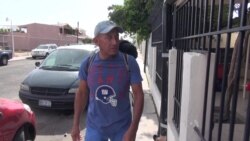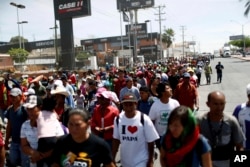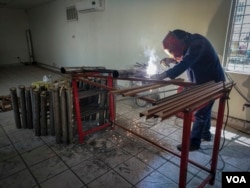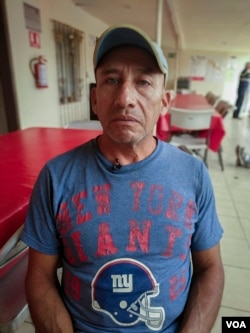On a broken concrete bench in Mexicali's Parque de los Heroes de Chapultepec, 23-year-old Honduran Merlin Sauceda sits alone - with the U.S.-Mexico border in plain sight - watching the afternoon dissolve into evening.
Having arrived days before a caravan of Central American migrants reached the city, he planned to find odd jobs to pay for his shelter and make up some of what was stolen from him on his journey along the freight trains known as “La Bestia.” With the arrival of the migrant caravan, he would continue with the group and travel 200 kilometers west to Tijuana’s port of entry.
Sauceda’s ultimate aim, shared by many migrants from the Northern Triangle countries of El Salvador, Honduras and Guatemala, was to seek safe harbor in the United States as an asylee - and leave a past of violence forever.
In his case, the Olancho, Honduras-native said he feared that gang members were after him, some 18 years after they killed his “jefe,” or dad.
“The ones that killed him now don’t trust me,” Sauceda said, in Spanish. “They think that I’ll seek revenge, and they’re looking for me.”
Though VOA couldn’t independently verify Sauceda’s story, he insists that his family has documentation to support his account.
Yet the process of seeking asylum at a U.S. port of entry is long and uncertain.
Upon completion of extensive vetting by Customs and Border Patrol, would-be asylees must undergo screenings to demonstrate a credible fear of persecution in their home countries. If this is established, an asylum officer refers the case to an immigration judge for a full hearing.
In Sauceda’s case, the complications run deeper. Already deported from the U.S. once for entering illegally, Sauceda must pass a more difficult “reasonable fear” screening — an interview which carries an overall positive screen-in rate of 32 percent, compared to 75 percent for credible fear claims.
When VOA asked why he didn’t consider asylum after his initial detainment, Sauceda said he only learned once it was too late that his brother-in-law had also been killed that year.
“I thought things would get better there, and that’s not the case,” he said. “It’s worse.”
Few alternatives
During the caravan’s journey, which received a lot of publicity, U.S. President Donald Trump complained of “loopholes” in the asylum-seeking process. Trump referred to a president George W. Bush-era policy known as “catch and release,” which allows migrants to be released from prolonged detention while the statuses of their asylum cases are pending.
“You catch and then you immediately release,” Trump said in early April, “and people come back years later for a court case, except they virtually never come back.”
In a statement released Wednesday, Secretary of Homeland Security Kirstjen Nielsen said her department was “monitoring” the course of the caravan, and warned that smugglers, traffickers, and criminals understand legal loopholes “better than Congress.”
“If you make a false immigration claim, you have broken the law and will be referred for prosecution,” Nielsen warned. “If you assist or coach an individual in making a false immigration claim, you have broken the law and will be referred for prosecution.”
Despite high violent death rates in Central America’s Northern Triangle region, the Trump Administration’s rhetoric on immigration, combined with the word-of-mouth that other migrants were being turned down for asylum at ports of entry, has led other would-be asylees to consider alternatives.
Such is the case of Guatemala-native Mario Hernandez, who lost two children at the hands of the Maras gang. Hernandez says his top priority is to obtain a humanitarian visa in Mexico, an increasingly popular destination for refugees, despite findings that refugees and migrants face “acute risks of kidnapping, disappearance, sexual assault, trafficking, and other grave harms” in the country, according to the nonprofit Human Rights First.
“I chose this border [city of Mexicali] because it’s supposedly the most calm,” Hernandez said. “The others are dangerous because of organized crime … if you are fleeing violence, you don’t want to land in their hands.”
Mind is set
Following the death of his children, the self-styled agronomist told VOA he received threats of extortion even after relocating to another city, forcing him to flee permanently.
Hernandez, 53, admits a trek to the United States isn’t completely off the table, if Mexico were to reject him. But even so, he would attempt to continue north to Canada and seek asylum there.
“Why would I put myself in a place where they don’t want you?” he asked, rhetorically.
But Sauceda considers the U.S. his last hope for safe passage. At the very mention of continuing his journey with the caravan, his eyes light up. He considers the migrants' support “encouraging.”
“I don’t have many ideas of how it will be,” Sauceda said. “But my mind is set to do it.”










